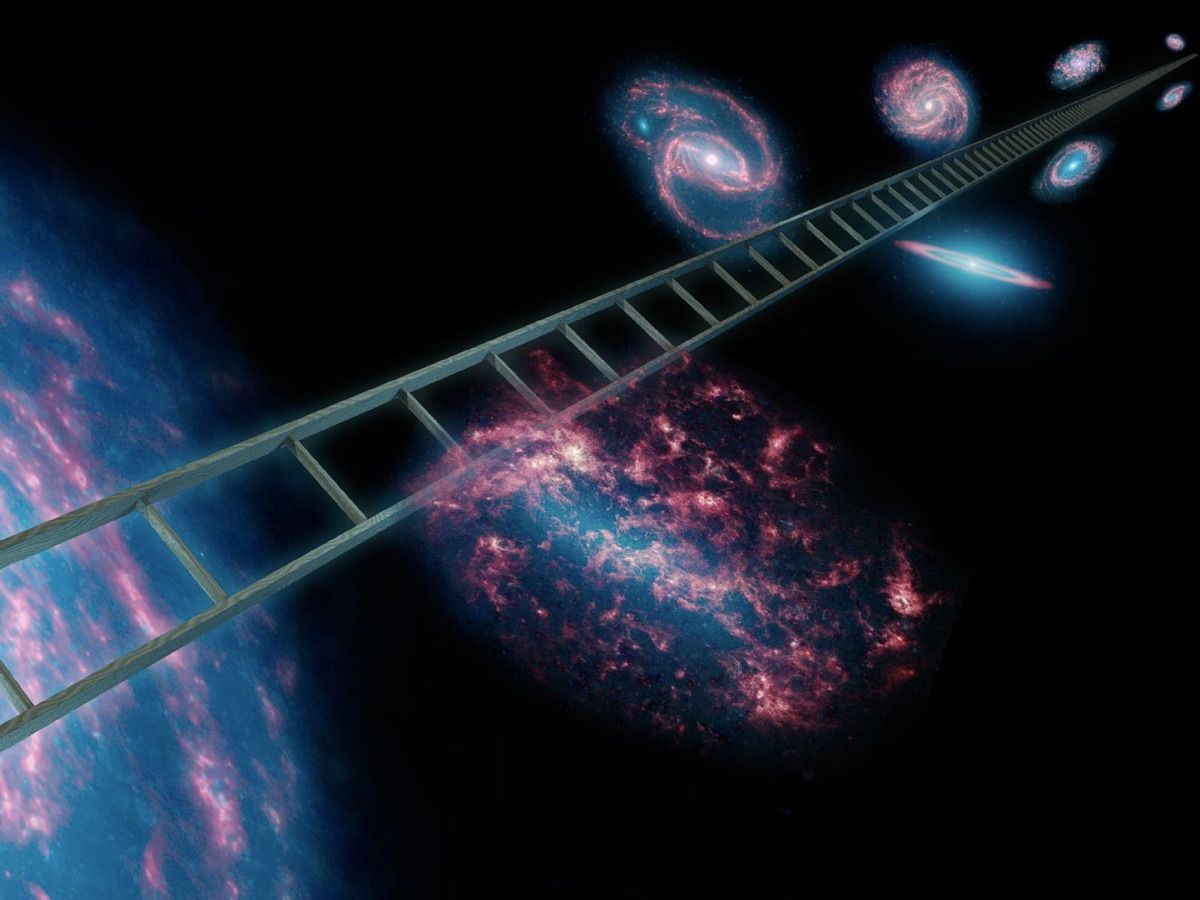
The Hubble constant tells us the rate at which this is happening. Likewise, distant galaxies moving away faster than nearby galaxies is exactly what we would expect to see in a universe that is expanding everywhere. If two blueberries are an inch away from each other before the batter expands, they will be two inches apart once the muffin is baked.
Edwin hubble research on galaxies full#
If two blueberries enter the oven half an inch away from each other and the batter doubles in size, the distance between them will increase to a full inch. As the muffin bakes and rises, the batter expands, moving all the blueberries apart. Even though astronomers can now make incredibly precise measurements of many more galaxies and stars, different methods for measuring the Hubble constant still produce disparate results. Generations of astronomers have improved upon Hubble’s original methods and developed new ones, bringing down the Hubble constant to around 70 km/s/Mpc, but there’s still a long way to go. Hubble’s original estimate was 500 km/s/Mpc, or about seven times the value astronomers think it is today. In 1929, Hubble and colleague Milton Humason used their observations to calculate the mathematical relationship between the distance to a star and the speed at which it is traveling away from the Earth-and thus, the Hubble constant was born. Not only did these measurements confirm that the universe extends far beyond the Milky Way, Hubble noticed that more distant stars seemed to be moving away faster.

Hubble used the work of fellow astronomer Henrietta Leavitt to predict the brightness of these stars, which enabled him to calculate their distances from Earth. While working at California’s Mount Wilson Observatory, Hubble used his extensive telescope experience to make measurements of Cepheid variable stars. He graduated from the University of Chicago in 1910 with a bachelor’s degree in mathematics, physics and philosophy, and later returned to the Yerkes Observatory of the University of Chicago as a graduate student. At the time, astronomers didn’t even have the observations to settle the Great Debate about the size of the universe some even argued that the universe did not extend beyond the Milky Way.Įdwin Hubble entered the world of astronomy at this exciting time. In the early 1920s, mathematicians used Einstein’s equations for general relativity to predict that the universe should be expanding, but scientists had not yet proven this through observations. UChicago astronomer Wendy Freedman led a team that made a landmark measurement in 2001, which found a value of 72. The most recent precise measurements of the distances and movements of distant, exploding stars suggest a Hubble constant of 69.8 km/s/Mpc, but other reports have pushed the value as high as 74 km/s/Mpc.Īlthough these differences seem small, even a 2 km/s/Mpc discrepancy between predictions from physics and observations implies there could be something major missing from our current understanding of the universe. Based on the fundamental physics that scientists believe has driven the evolution of the universe, the Hubble constant should be around 68 km/s/Mpc-but this doesn’t match up to observations of the actual stars and galaxies astronomers see around us. However, the true value of the Hubble constant remains up for debate. a star or a galaxy) at a known distance from the Earth, the Hubble constant can be used to predict how fast it should be moving away from us.

How was the Hubble constant discovered?.


 0 kommentar(er)
0 kommentar(er)
